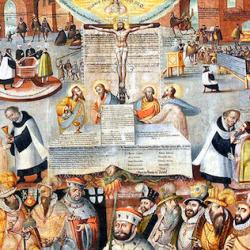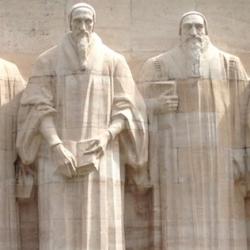In his Unitive Protestantism, John T. McNeill sketches the “communio” ecclesiology of the Reformers: “They interpreted the creedal tenet of ‘the Holy Catholic Church’ in terms of the communio sanctorum, and identified the latter both with the invisible communion of the saved and with the true visible church in the world which they felt themselves called to restore.”
Communion “involved a high degree of corporate consciousness, a group solidarity, and the recognition of an obligation mutually to bestow religious benefits and render social services.” It was a sacramental communion, “associated with the mystery of the Eucharist, and its values were impressed under the idea of the priesthood of every Christian, an office conceived of not in an individualistic but in a social sense as obligation to aid his fellow Christian and ‘be a Christ’ to him” (56-7).
When the Reformers appealed to the invisible church, as they frequently did, it was not to undermine the visibility of the communion. The invisible church “functioned in the cause of practical church reform,” as the ideal by which the visible church was to be judged and the telos of reform of the visible church. Far from rejecting the visible church, McNeill argues that the Reformation was an effort to recover the genuine visible form of the church, the form of communion. From the perspective of the Reformers, the Roman church wasn’t too visible; rather, its character as communio was not nearly visible enough.
McNeill puts it this way: “The spiritual qualities, which in the contemporary state of decline had seemingly passed out of the external and could be posited only of the unseen church, were to be given visibility again as the renovated visible society took on the character of the invisible model” (40). For the Reformers, “A reformation or revival of the church . . . means the glorious increase of her visibility, the prosperity of the earthly counterpart to the heavenly model” (47).
Reformation was an effort to restore the visibility of a social form that had been nearly buried under what the Reformers considered the rubble of Roman error.














